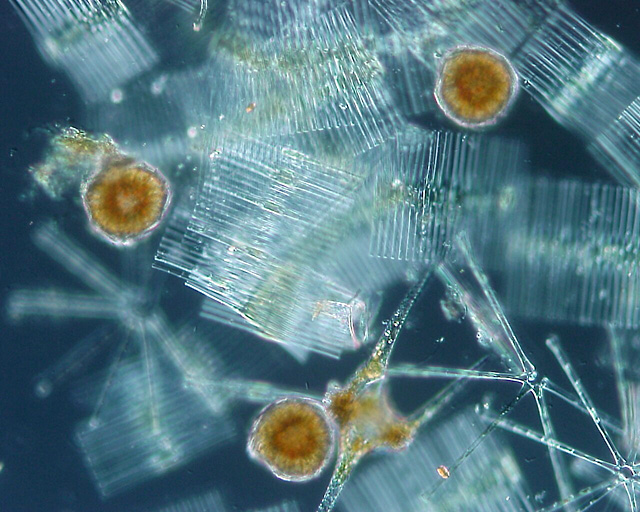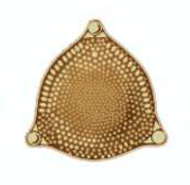The importance of phytoplankton
by Ailsa Harvey · 17/09/2019
Forget whales, sharks and the giant squid: it’s the smallest living organisms in the briny blue that keep life on our planet working as it should

Phytoplankton are the definition of the phrase ‘all good things come in small packages’. Simply put, most of these little ocean drifters are microscopic, single-celled plant-like organisms that photosynthesise and can be found in both marine and freshwater and are present in all of the world’s oceans. They live
in the euphotic zone (the topmost layer of the ocean) where sunlight is plentiful. There are so many that if you scooped up a Coke can of seawater you’d probably have bagged yourself as many as 75–100 million individual phytoplankton.
Accompanying the phytoplankton in this heady mix of ocean soup are the
zooplankton, which are tiny animals – some are the larval stages of much bigger creatures, others will remain as just tiny beasts. All plankton are unable to swim against the ocean currents and so they float at the mercy of the waves. However, there are areas where more phytoplankton occur, usually where upwelling (deep, cold water rises up to the surface) brings essential nutrient-rich water to the surface.
Phytoplankton are crucial for life on Earth —it’s almost unimaginable to think of a world without them. The tiny organisms form the basis of the entire oceanic food web, photosynthesising to turn sunlight into energy and providing food for small filter-feeders and grazers, which in turn are food for larger animals, including the fish on our own plates.

The phytoplankton also have a huge impact on our atmosphere as they are responsible for producing at least 50 per cent of Earth’s oxygen. They are also an important carbon sink, taking in carbon dioxide from
the atmosphere that is then pulled to the bottom of the ocean when the phytoplankton dies. Over millions of years these plankton (along with other marine creatures and organic matter) build up in layers on the seabed, which, under intense pressure and heat, can form oil or natural gas.

Cyanobacteria
Not actually algae, these bacteria were the first organisms to produce significant volumes of oxygen via photosynthesis some 2.4 billion years ago — changing the Earth’s atmosphere forever.

Diatom
A common type of phytoplankton, the diatom’s cell wall is made of silica (which is the main component of glass) and the many beautiful perforations allow nutrients to enter and remove waste.

Dinoflagellate
Some dinoflagellates are bioluminescent while others produce toxic ‘red tides’ that are lethal to marine life. They have ‘flagella’, tiny whip-like structures that allow for movement in the water.

Green algae
Members of this huge, informal group of algal types (which contains about 8,000 species) are the ancestors of land plants. They live as single cells as well as forming large colonies in marine and fresh water.

Coccolithophore
The single cell of the coccolithophore is covered in minuscule discs made of calcite, or chalk, which accumulate on the seabed when the cell dies. Billions of coccolithophores created the white cliffs of Dover.
This article was originally published in How It Works issue 107, written by Ella Carter
For more science and technology articles, pick up the latest copy of How It Works from all good retailers or from our website now. If you have a tablet or smartphone, you can also download the digital version onto your iOS or Android device. To make sure you never miss an issue of How It Works magazine, subscribe today!





